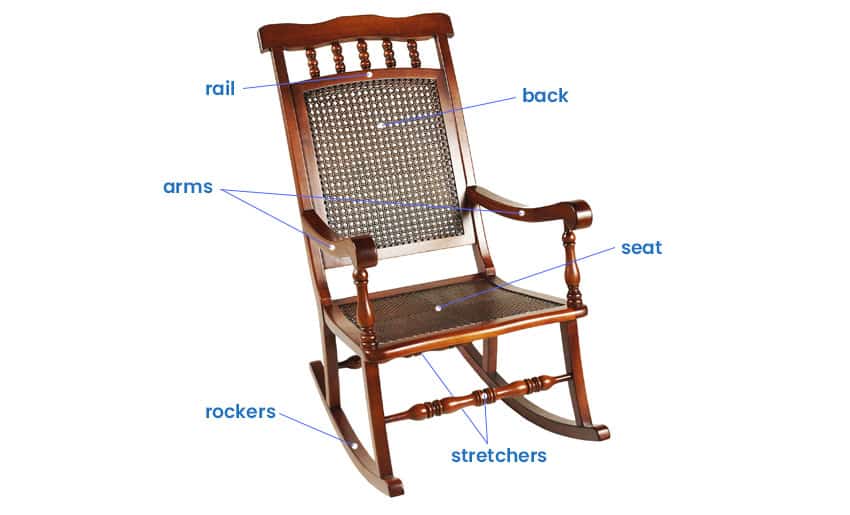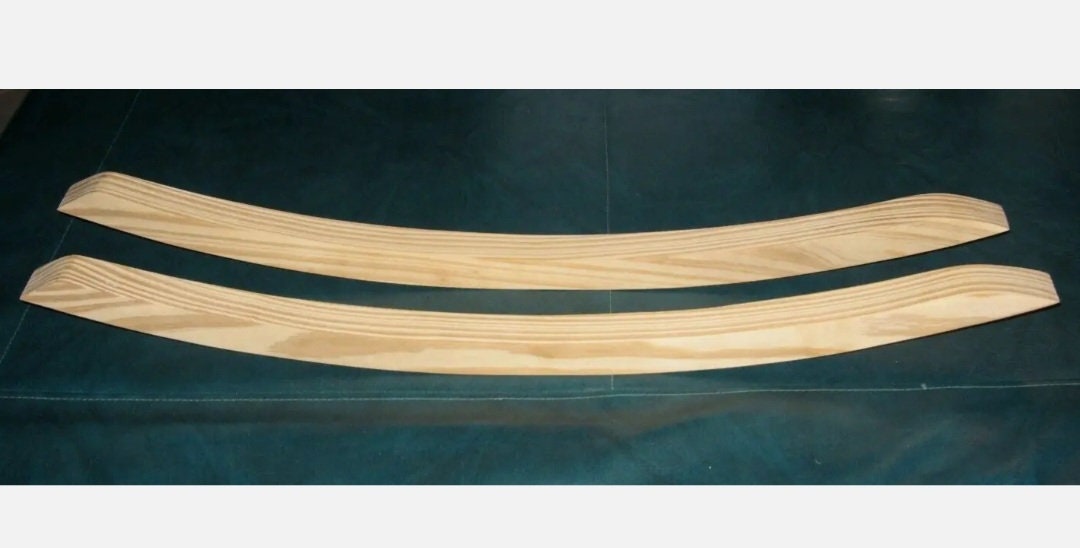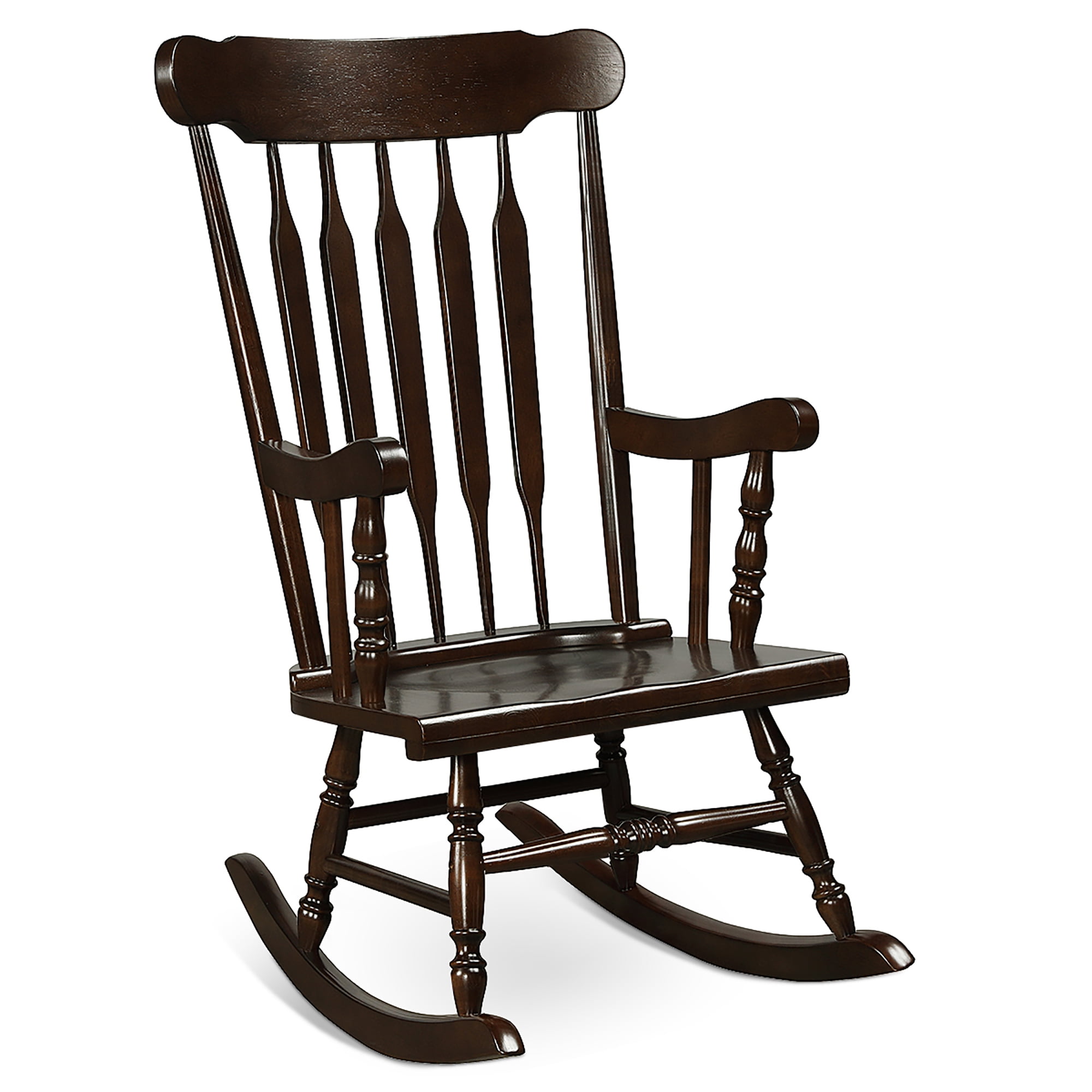Anatomy of a Rocking Chair

Rocking chairs, with their gentle swaying motion, offer a unique blend of comfort and nostalgia. Their design, while seemingly simple, involves a complex interplay of parts that contribute to their functionality and aesthetic appeal. This section delves into the anatomy of a rocking chair, exploring the different components and their roles.
Parts of a Rocking Chair
The fundamental parts of a rocking chair, regardless of its style or material, remain consistent. These components work in harmony to create the signature rocking motion and provide a comfortable seating experience.
- Seat: The seat forms the primary surface for sitting, typically contoured for ergonomic comfort. It’s usually padded and upholstered for added softness and support.
- Back: The back provides support for the user’s spine, often with a slight recline for optimal comfort. It can be shaped in various ways, from straight to curved, depending on the design.
- Arms: Arms provide additional support for the user’s arms and elbows, enhancing comfort and relaxation. They can be designed in various styles, from simple to elaborate, depending on the chair’s aesthetic.
- Legs: The legs are the foundation of the chair, providing structural support and stability. They are typically crafted from strong materials like wood or metal.
- Rockers: The rockers are the defining feature of a rocking chair, responsible for the signature swaying motion. They are curved pieces of wood or metal attached to the legs, creating a smooth rocking arc.
Structural Differences Between Traditional and Modern Rocking Chairs
While the basic components remain the same, traditional and modern rocking chairs exhibit significant structural variations.
- Traditional Rocking Chairs: These chairs often feature a more classic design, with a simple, elegant frame, curved back, and wide, rounded rockers. They are typically crafted from solid wood, often showcasing intricate joinery and craftsmanship.
- Modern Rocking Chairs: Modern rocking chairs often embrace minimalist designs, featuring clean lines, sleek silhouettes, and unconventional materials. They might incorporate metal frames, upholstered seats and backs, and more contemporary rocker shapes.
Materials Used in Rocking Chairs
Rocking chairs are crafted from a wide range of materials, each contributing to their durability, aesthetics, and overall character.
Wood
- Oak: Known for its strength, durability, and attractive grain patterns, oak is a popular choice for traditional rocking chairs. It’s also resistant to wear and tear, making it suitable for high-traffic areas.
- Maple: Maple is prized for its hard, dense wood, making it strong and durable. It also features a beautiful, warm color and intricate grain patterns.
- Cherry: Cherry wood is known for its rich, reddish-brown color and fine grain. It’s often used in rocking chairs for its elegance and warmth.
- Walnut: Walnut is a luxurious wood, known for its rich, dark brown color and distinctive grain patterns. It’s often used in high-end rocking chairs for its beauty and durability.
Metal
- Steel: Steel is a strong, durable metal, often used in modern rocking chairs for its sleek appearance and ability to withstand heavy use. It can be easily welded and shaped, allowing for intricate designs.
- Aluminum: Aluminum is a lightweight, durable metal, often used in rocking chairs for its corrosion resistance and ability to be easily molded. It’s a good choice for outdoor rocking chairs.
Upholstery
- Leather: Leather is a luxurious, durable upholstery material, known for its breathability and comfort. It ages beautifully, developing a rich patina over time.
- Fabric: Fabrics, such as cotton, linen, and velvet, offer a wide range of colors, textures, and patterns. They can be easily cleaned and maintained, making them a popular choice for upholstery.
Rocking Chair Mechanisms: Rocking Chair Part Names

The rocking chair mechanism is the heart of its functionality, enabling the gentle back-and-forth motion that defines this iconic piece of furniture. Understanding the mechanics behind this motion is crucial to appreciating the design ingenuity and the comfort it provides.
Types of Rocker Designs
Rocker designs play a significant role in determining the rocking chair’s stability, smoothness, and overall feel. Each type has unique characteristics that cater to different preferences and usage scenarios.
- Curved Rockers: These rockers are typically found in traditional rocking chairs. They feature a curved shape that provides a smooth and gentle rocking motion. The curve is designed to gradually increase the rocking amplitude as the chair moves back and forth, creating a natural and comfortable swaying sensation.
- Flat Rockers: Flat rockers offer a more stable and controlled rocking experience. They are typically wider and flatter than curved rockers, resulting in a less pronounced rocking motion. This design is often preferred for chairs intended for heavier use or those intended for children.
- Elliptical Rockers: Elliptical rockers combine elements of both curved and flat rockers. They feature a slightly curved shape with a wider base, providing a balance between stability and a smooth rocking motion. This design is popular for its versatility and ability to accommodate a wide range of user preferences.
Innovative Rocking Chair Mechanisms
Beyond the traditional rocker designs, innovative mechanisms have emerged to enhance the rocking chair experience, introducing unique functionalities and comfort features.
- Spring-Loaded Rockers: These rockers utilize springs to provide a more responsive and dynamic rocking motion. The springs help to absorb shock and provide a smoother and more comfortable ride, particularly when rocking with greater force.
- Self-Returning Rockers: These rockers incorporate a mechanism that automatically returns the chair to its starting position after rocking. This feature eliminates the need to manually push the chair back, providing a more effortless and relaxing rocking experience.
- Adjustable Rocking Mechanisms: Some rocking chairs offer adjustable rocking mechanisms, allowing users to customize the intensity and amplitude of the rocking motion. This feature provides greater flexibility and control, enabling users to find the perfect rocking experience for their individual needs.
Stability and Smoothness of Rocking Motion
The stability and smoothness of the rocking motion are crucial factors in determining the overall comfort and enjoyment of a rocking chair.
- Curved Rockers: Curved rockers generally provide a smoother and more pronounced rocking motion. However, they can be less stable than other designs, especially when rocking with greater force.
- Flat Rockers: Flat rockers offer a more stable and controlled rocking experience, but the motion can be less smooth and less pronounced.
- Elliptical Rockers: Elliptical rockers strike a balance between stability and smoothness, providing a comfortable and controlled rocking experience.
Common Rocking Chair Styles and Variations

Rocking chairs have been a beloved furniture staple for centuries, and their design has evolved over time to encompass a wide array of styles. From the classic Windsor rocking chair to the more modern Adirondack design, each style has its own unique features and historical context. Understanding these variations can help you appreciate the rich history and versatility of rocking chairs.
Popular Rocking Chair Styles, Rocking chair part names
Here are some of the most popular rocking chair styles, along with their defining characteristics:
- Windsor Rocking Chair: This iconic style is known for its simple, elegant design, often featuring a curved back, spindle-like legs, and a comfortable, contoured seat. It originated in the 18th century in England, where it was made from various woods like oak, maple, and elm. Windsor rocking chairs are known for their durability and classic appeal.
- Adirondack Rocking Chair: This style emerged in the late 19th century in the Adirondack Mountains of New York. It is characterized by its wide, flat seat, high back, and armrests that are often angled for optimal comfort. Adirondack rocking chairs are typically made from durable cedar or redwood and are popular for outdoor use.
- Mission Rocking Chair: This style emerged in the early 20th century as part of the Arts and Crafts movement. Mission rocking chairs are known for their simple, clean lines, often with a straight back, wide armrests, and a sturdy, boxy construction. They are typically made from oak or other hardwoods and often feature a natural, unfinished finish.
Rocking Chair Styles: A Comparative Table
The following table provides a concise overview of the key features, materials, and historical origins of some popular rocking chair styles:
| Style | Key Features | Materials | Historical Origins |
|---|---|---|---|
| Windsor | Curved back, spindle-like legs, contoured seat | Oak, maple, elm | 18th century England |
| Adirondack | Wide, flat seat, high back, angled armrests | Cedar, redwood | Late 19th century, Adirondack Mountains, New York |
| Mission | Simple, clean lines, straight back, wide armrests | Oak, other hardwoods | Early 20th century, Arts and Crafts movement |
| Victorian | Ornate carvings, intricate details, plush upholstery | Mahogany, walnut, cherry | 19th century, Victorian era |
| Danish Modern | Sleek, minimalist design, curved lines, often made of wood or metal | Teak, rosewood, steel | Mid-20th century, Denmark |
Historical Significance and Cultural Relevance
Rocking chairs have a rich history and hold significant cultural relevance in various regions and time periods.
“The rocking chair is an American icon, representing comfort, relaxation, and a sense of home.” – *The American Heritage Dictionary of the English Language*
Rocking chairs have been a prominent feature in American culture since the colonial era. They were often found in homes, on porches, and even in public spaces, serving as a place for relaxation, reflection, and social interaction. In the South, rocking chairs are particularly associated with the antebellum period and the iconic image of the Southern gentleman sitting on the porch.
Beyond America, rocking chairs have also played a significant role in various cultures. In Europe, rocking chairs were popularized in the 19th century, particularly in Scandinavian countries. In Asia, rocking chairs have been used in traditional settings, often featuring unique designs and materials.
Unique and Unconventional Rocking Chair Designs
While traditional rocking chair styles are beloved for their classic appeal, there are also numerous examples of innovative and unconventional designs that push the boundaries of traditional aesthetics.
- Modernist Rocking Chairs: Modernist rocking chairs often feature minimalist designs, clean lines, and innovative materials. Examples include the “Eames Rocking Chair” by Charles and Ray Eames, which is known for its iconic molded plywood shell and steel base.
- Sculptural Rocking Chairs: Some rocking chairs are designed as works of art, with intricate curves, organic shapes, and unique materials. These chairs are often created by contemporary designers and artists who explore the boundaries of furniture design.
- Rocking Chairs with Integrated Features: Some innovative designs incorporate features like built-in lighting, sound systems, or even massage functions. These chairs blur the lines between furniture and technology, creating a more immersive and interactive experience.
Rocking chair part names – Rocking chairs have a few key parts, like the rockers, the seat, and the arms. But what about the feet that connect the rockers to the ground? Those are often overlooked, but they play a crucial role in stability and comfort.
Take the Helinox Rocking Feet Sunset Chair , for example, where the feet are specifically designed for outdoor use. No matter what type of rocking chair you have, remember that the feet are an important part of the whole experience.
You know, rocking chairs have some pretty basic parts – the rockers, the seat, the back, and the arms. But then there’s the dutailier glider rocking chair , which takes things up a notch with its smooth gliding motion and comfy design.
And speaking of parts, it’s got that extra piece, the gliding mechanism, that makes it so special!
